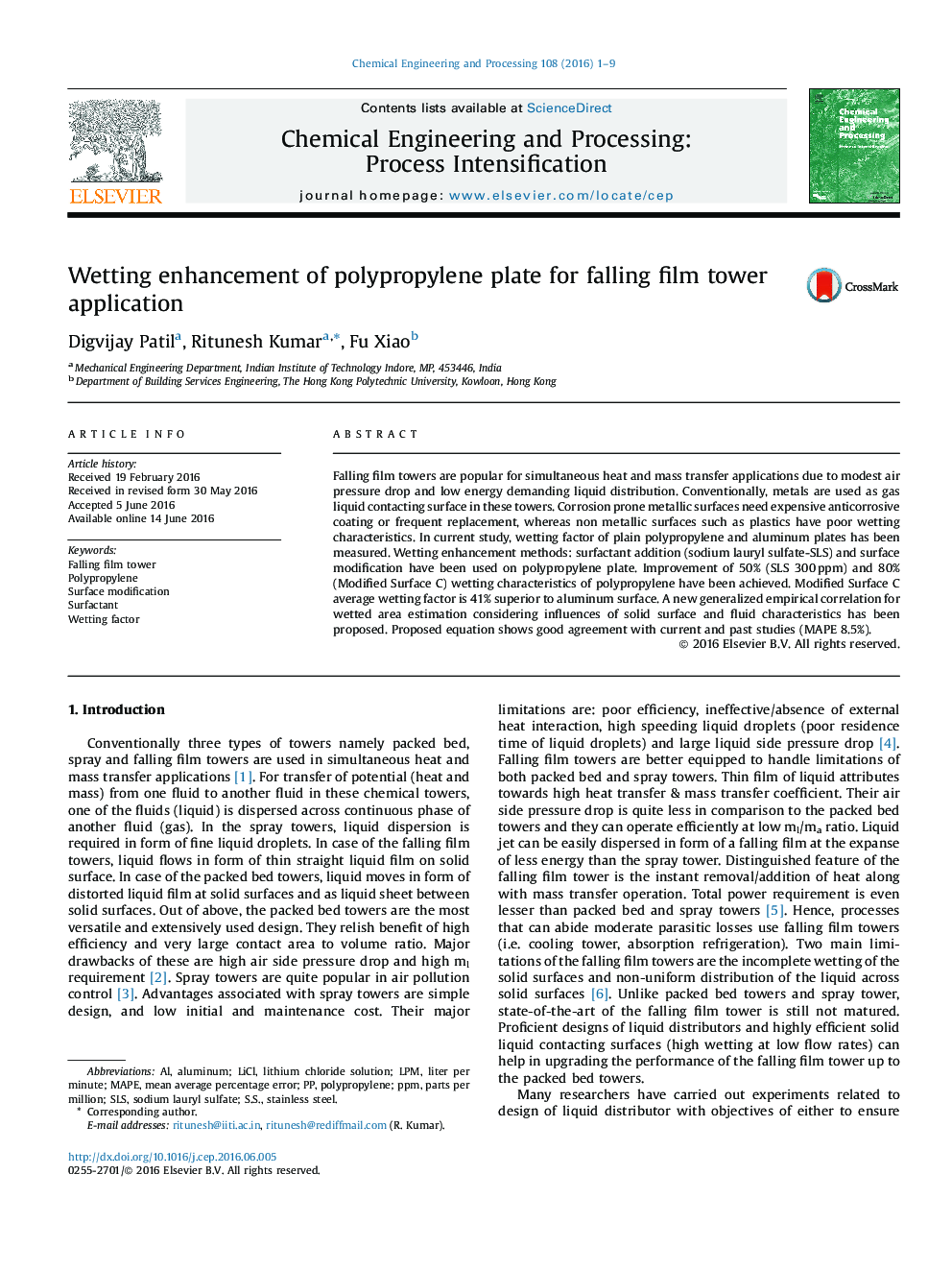| کد مقاله | کد نشریه | سال انتشار | مقاله انگلیسی | نسخه تمام متن |
|---|---|---|---|---|
| 687027 | 1460069 | 2016 | 9 صفحه PDF | دانلود رایگان |
• Wetting factor of plain PP and Al surfaces have been measured.
• PP wetting factor improves 50% by the addition of 300 ppm sodium lauryl sulfate.
• Horizontal inclined recess opposite to direction of fluid flow improves wetness of PP.
• 80.4% improvement in wetting factor of PP has been achieved by Modified surface C.
• New generalized empirical correlation for wetted area estimation has been proposed.
Falling film towers are popular for simultaneous heat and mass transfer applications due to modest air pressure drop and low energy demanding liquid distribution. Conventionally, metals are used as gas liquid contacting surface in these towers. Corrosion prone metallic surfaces need expensive anticorrosive coating or frequent replacement, whereas non metallic surfaces such as plastics have poor wetting characteristics. In current study, wetting factor of plain polypropylene and aluminum plates has been measured. Wetting enhancement methods: surfactant addition (sodium lauryl sulfate-SLS) and surface modification have been used on polypropylene plate. Improvement of 50% (SLS 300 ppm) and 80% (Modified Surface C) wetting characteristics of polypropylene have been achieved. Modified Surface C average wetting factor is 41% superior to aluminum surface. A new generalized empirical correlation for wetted area estimation considering influences of solid surface and fluid characteristics has been proposed. Proposed equation shows good agreement with current and past studies (MAPE 8.5%).
Figure optionsDownload as PowerPoint slide
Journal: Chemical Engineering and Processing: Process Intensification - Volume 108, October 2016, Pages 1–9
